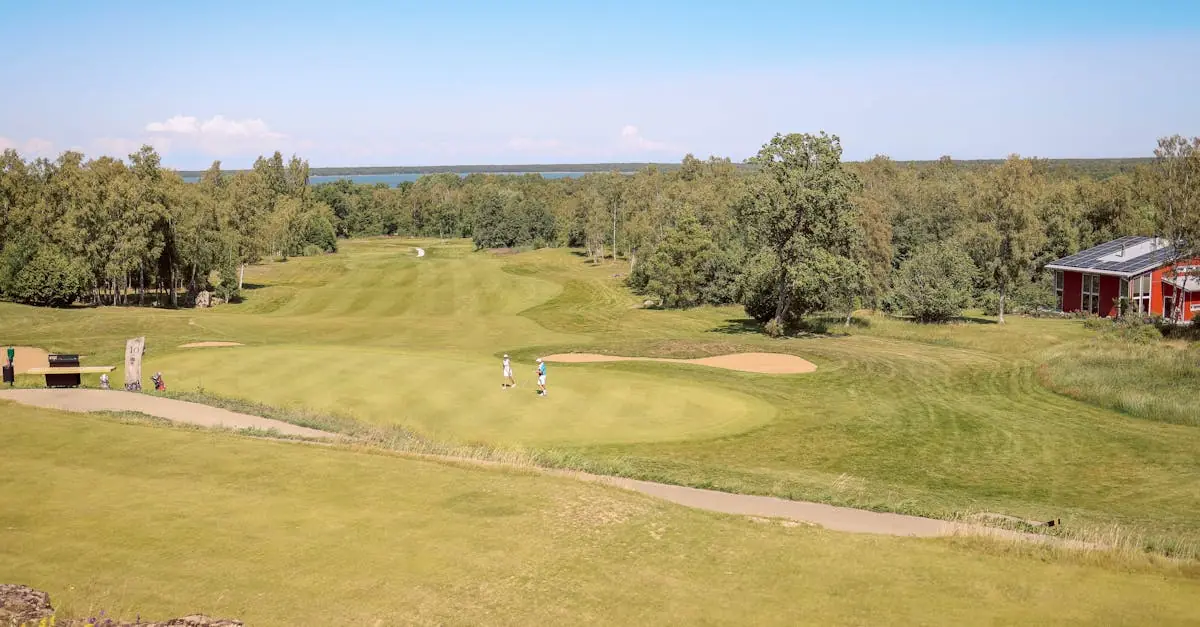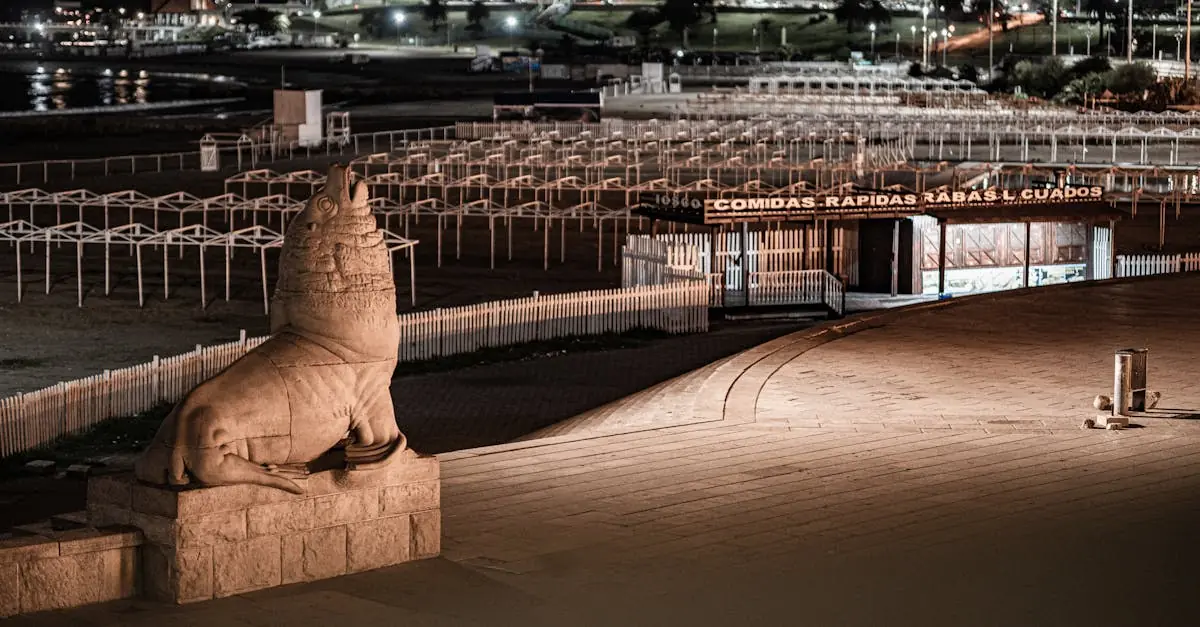Roblox has taken the gaming world by storm, attracting millions of players with its endless creativity and immersive experiences. But have you ever wondered which country reigns supreme in the Roblox universe? Spoiler alert: it’s not just a bunch of kids in basements; it’s a global phenomenon that spans continents and cultures.
Table of Contents
ToggleOverview of Roblox Player Demographics
Roblox’s player demographic reflects a diverse global community. Countries like the United States, Brazil, and the Philippines lead in player counts. The United States accounts for approximately 28% of all users, showcasing its significant influence on the platform’s growth.
Age distribution within Roblox shows a strong presence of players aged 9 to 15 years, but the appeal expands to older demographics as well. Countries with high levels of internet access often yield a larger number of players. For instance, players in Brazil engage in various gaming experiences through Roblox, contributing to its vibrant community.
Additionally, engagement varies by region, with North America and Southeast Asia demonstrating particularly high activity levels. Countries with substantial youth populations frequently exhibit increased Roblox usage. Player behavior indicates strong user retention, with many logging in daily to explore new content.
Surveys reveal that many players enjoy creating their own games, fostering creativity within the platform. Communities formed around shared interests strengthen connections among players across different countries. Statistics show that around 40% of Roblox players engage in user-generated content, reflecting the platform’s emphasis on creativity and collaboration.
Mobile accessibility influences player growth, especially in developing nations, where smartphone usage continues to rise. Regions with higher disposable income often reflect higher engagement rates on Roblox. By engaging with local cultures, Roblox adapts to the interests of various markets while expanding its player base continuously.
Leading Countries in Roblox Popularity
Roblox boasts a global player base, with several countries showcasing impressive engagement levels. Understanding which nations contribute the most to this virtual world reveals insights into gaming trends.
Analyzing Player Distribution
Each region contributes uniquely to Roblox’s popularity. The United States leads with around 28% of the total player base, demonstrating significant engagement. Brazil and the Philippines follow closely, both showing robust participation levels. Southeast Asia experiences high activity as well, partly due to increased mobile accessibility. In developing nations, growth hinges on local interests, enabling players to access user-generated content easily. Such diverse demographics emphasize how Roblox adapts to various cultural contexts and preferences.
Top Countries Ranked
The ranking of countries by Roblox players illustrates distinct trends. The United States ranks first, followed by Brazil and the Philippines. After these top three, users from countries like the United Kingdom and Canada contribute significantly. Data shows that Brazil engages a unique demographic, where younger players dominate. Players in the Philippines often explore collaborative gameplay features. These rankings reflect global interest in creative user-generated experiences, cementing Roblox as a leading platform in the gaming industry.
Factors Influencing Roblox Player Numbers
Roblox’s player numbers vary significantly based on several key factors. The following aspects play a pivotal role in shaping engagement across different regions.
Internet Accessibility
Access to reliable internet greatly impacts player numbers. Countries with widespread internet connectivity tend to have more Roblox users. The rise of mobile gaming in areas with poor infrastructure allows players to connect from almost anywhere. Regions like Southeast Asia experience increased player engagement as mobile networks improve. Comparatively, regions struggling with access show lower player counts, highlighting the importance of technology in gaming participation.
Cultural Engagement with Gaming
Cultural attitudes towards gaming significantly influence Roblox’s popularity. In the United States, games are often embraced as a social activity. Countries like Brazil view gaming as a community-building exercise, leading to higher player interaction and creativity. Family acceptance of gaming also drives participation; the more normalized gaming is within a culture, the more likely players are to engage. Interactive user-generated content satisfies diverse interests, further reflecting a culture’s relationship with gaming.
Methodology for Data Collection
Data collection involved multiple methodologies to accurately assess player demographics across different countries. Surveys conducted among Roblox users helped gather first-hand information about geographical distribution, engagement levels, and age ranges. User accounts from the Roblox platform provided quantitative data on overall player counts, showcasing trends in retention and growth.
Analytics from the Roblox website highlighted the proportion of users in specific regions, such as the United States, Brazil, and the Philippines. Usage patterns, including peak activity hours and engagement duration, were analyzed to enhance understanding of regional variations. Access to mobile analytics offered insights into how mobile gaming affects player populations, especially in countries with limited internet infrastructure.
To supplement this information, public reports on gaming revenues alongside regional internet accessibility statistics contributed valuable context. Combining these data sources allowed for a comprehensive view of players’ interactions with the game, revealing insights into local gaming cultures. Analysis focused not only on total player counts but also on player behaviors and preferences, emphasizing how these factors differ across countries.
Engagement levels were cross-referenced with demographic data, enabling a clearer picture of how age influences participation. Cultural attitudes toward gaming emerged as a significant factor, directly impacting player growth in various regions. Critical evaluation of data trends ensured that conclusions remained relevant to current player behaviors and preferences.
This methodological approach provides an informed basis for understanding where Roblox thrives most effectively, illustrating its global appeal and engagement dynamics.
Roblox’s global reach and diverse player base illustrate its status as a leading gaming platform. The United States, Brazil, and the Philippines dominate the player counts, showcasing the game’s widespread appeal across various cultures. As mobile accessibility continues to rise, especially in developing regions, Roblox’s community is likely to grow even further.
Cultural attitudes toward gaming play a crucial role in shaping engagement levels, with different countries embracing the platform in unique ways. This dynamic environment fosters creativity and collaboration among players, ensuring that Roblox remains a vibrant and evolving space for users of all ages. As it adapts to local cultures and preferences, Roblox’s influence in the gaming industry is poised to expand even more.







